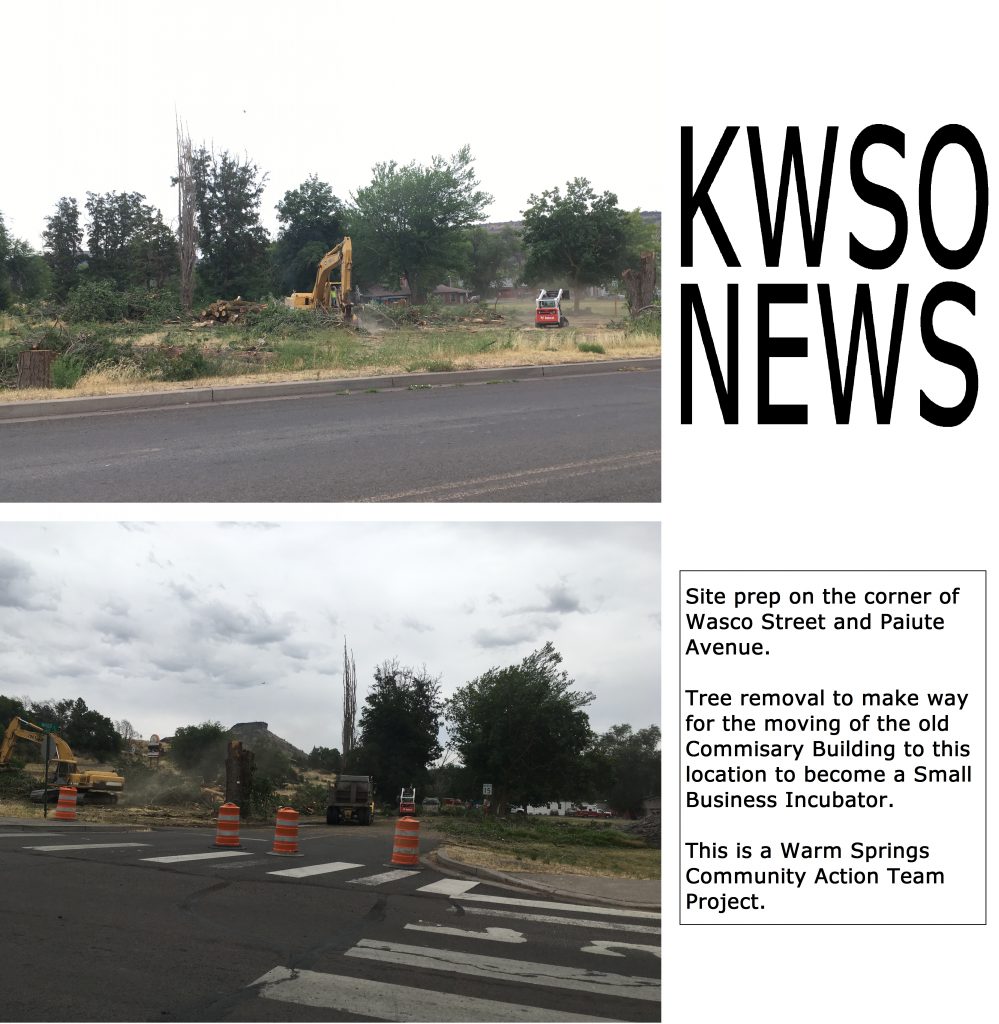Local News
KWSO News 7/10/19
As part of the ongoing effort to repair the Warm Springs Agency Water System – Public Utilities staff have routinely been checking water levels in reservoirs in the Agency area. Yesterday afternoon they reported low levels of water in the South East reservoir. The South East reservoir tank feeds water to both the West Hills and Greeley Heights reservoirs. West Hills residents started to experience low water pressure and water outages late yesterday.
While the system has been online, there are still repairs to pressure reducing valves that need to be made to stabilize the system. Until these repairs are completed, it is difficult to control pressure within the system. This impacts the ability to the open valves to release more water into the system and fill up reservoirs quickly. Residents and businesses must continue to conserve water.
The portable showers that were brought in during the recent water main break were removed earlier this week. Warm Springs Emergency Management reports that the Water distribution center continue to hand out water 7:30am – 6pm weekdays.
Water supplies are in place at the Early Childhood Education Center where they plan on reopening next Monday, if all goes well, for 3 year olds and older. Portable handwashing stations are being brought in to accommodate the preschool and older children.
The Oregon Health Authority is reminding the public that a precautionary recreational use health advisory for the 2019 cyanobacterial (harmful algal) bloom season remains in effect for Lake Billy Chinook due to blooms that typically develop in the lake. Oregon Health Authority is not aware of any blooms in the lake at this time. However, blooms can develop throughout the season and in areas that are not visually monitored by Jefferson County, Oregon State Parks or the U.S. Forest Service.
The 53rd annual Crooked River Roundup races begin tonight at the Crook County Fairgrounds in Prineville. The four-day event runs through Saturday. Eight races are scheduled for today and Thursday and 10 races for Friday and Saturday.
The US suicide rate is up 33% since 1999, but for Native American women and men, the increase is even greater: 139% and 71%, respectively, according to an analysis out this week from the Centers for Disease Control and Prevention’s National Center for Health Statistics. Suicide disproportionately affects American Indian and Alaska Natives, according to the CDC. A 2018 CDC report found their suicide rate was more than 3.5 times higher than those among racial and ethnic groups with the lowest rates. Experts who study Native American suicide blame higher rates of poverty, substance abuse and unemployment as well as geographical isolation, which can make it difficult for people to access mental health care. A separate analysis published Tuesday in the Journal of the American Medical Association found the suicide rate for all US teens and young adults increased in 2017 to its highest point since 2000.

